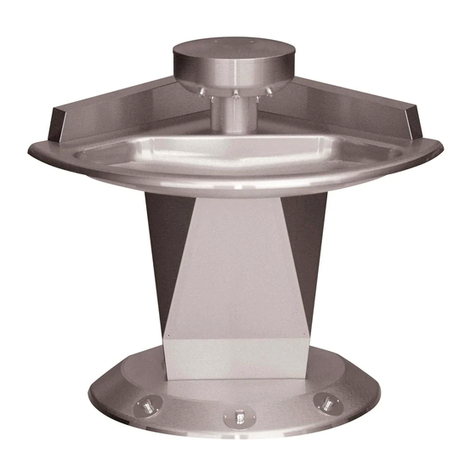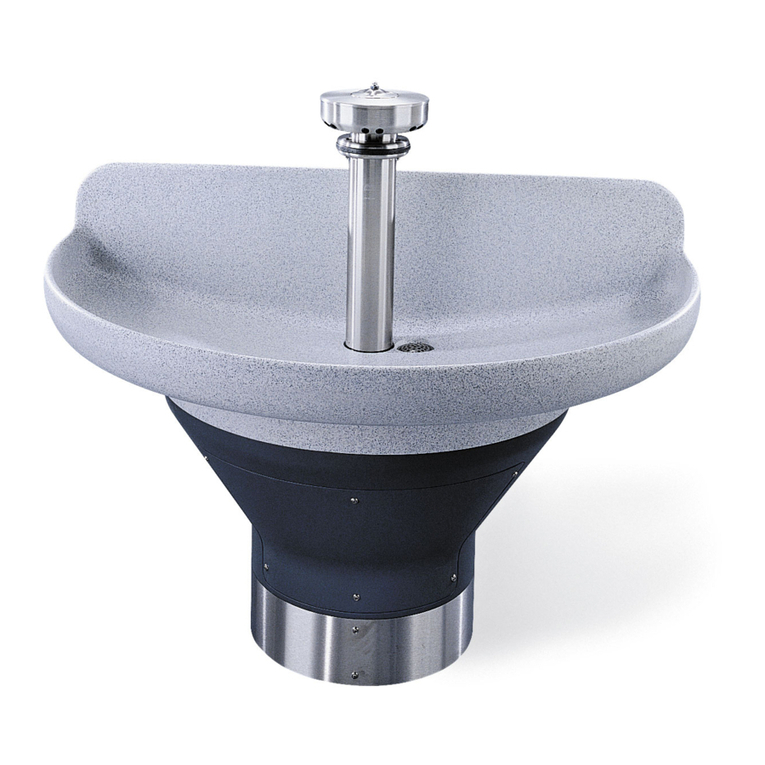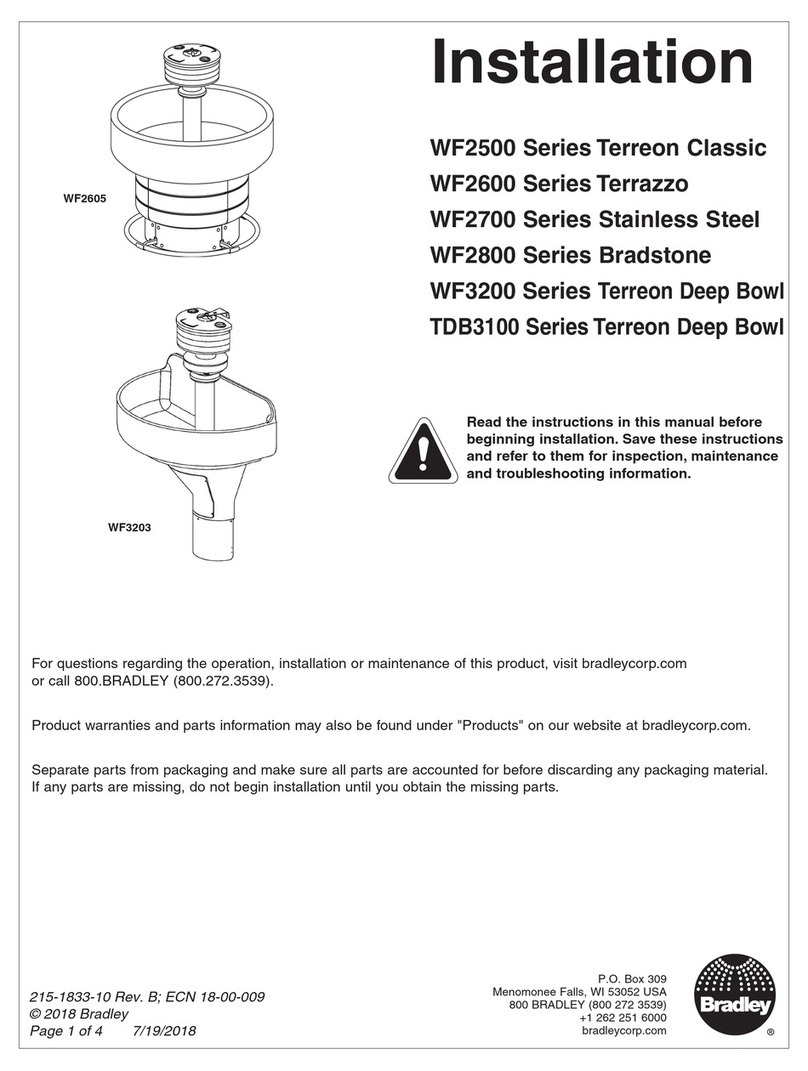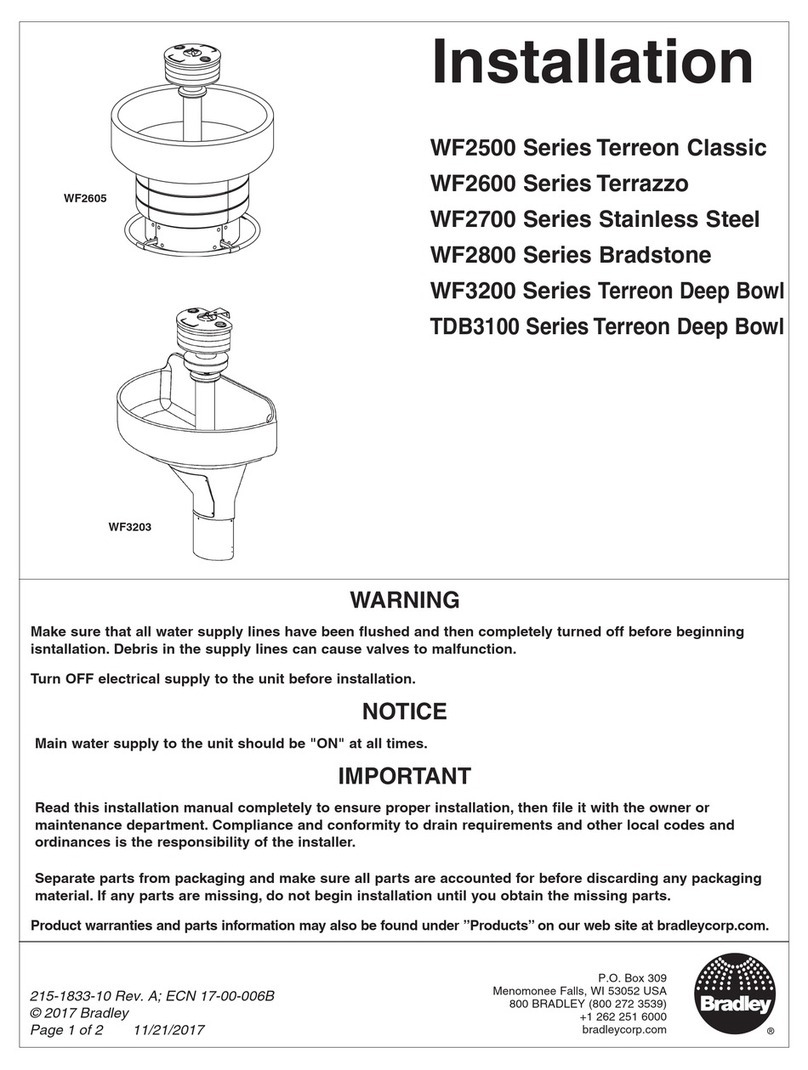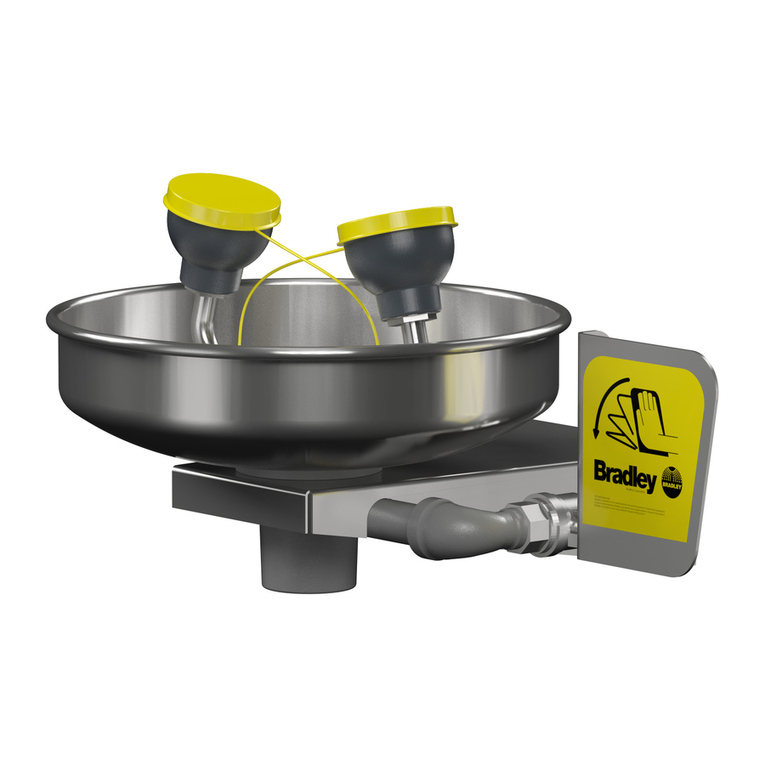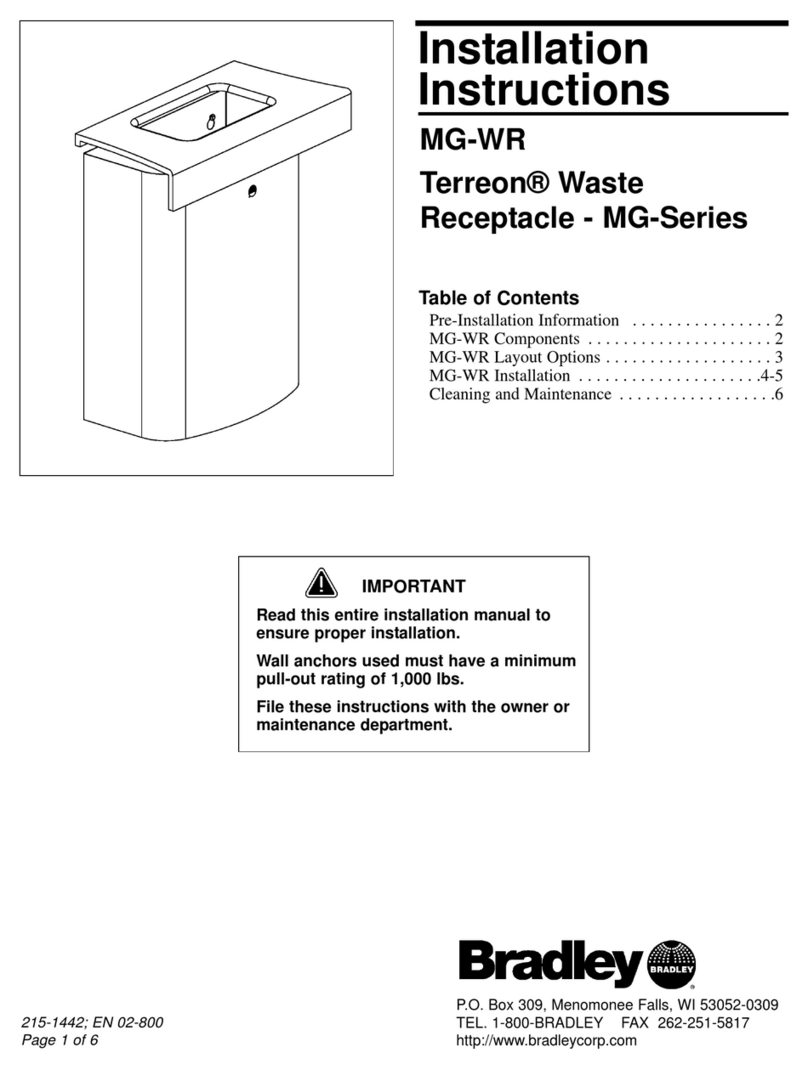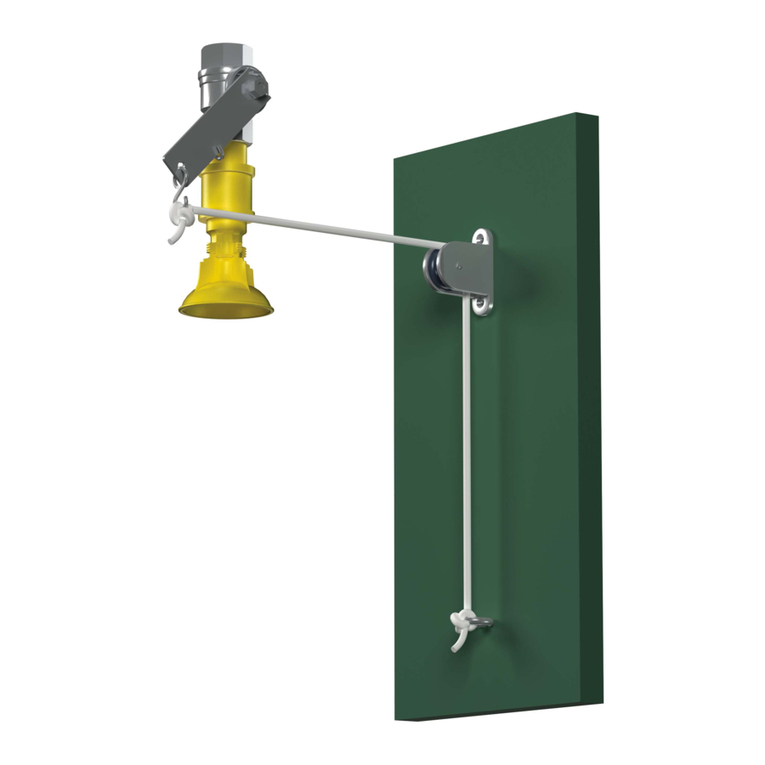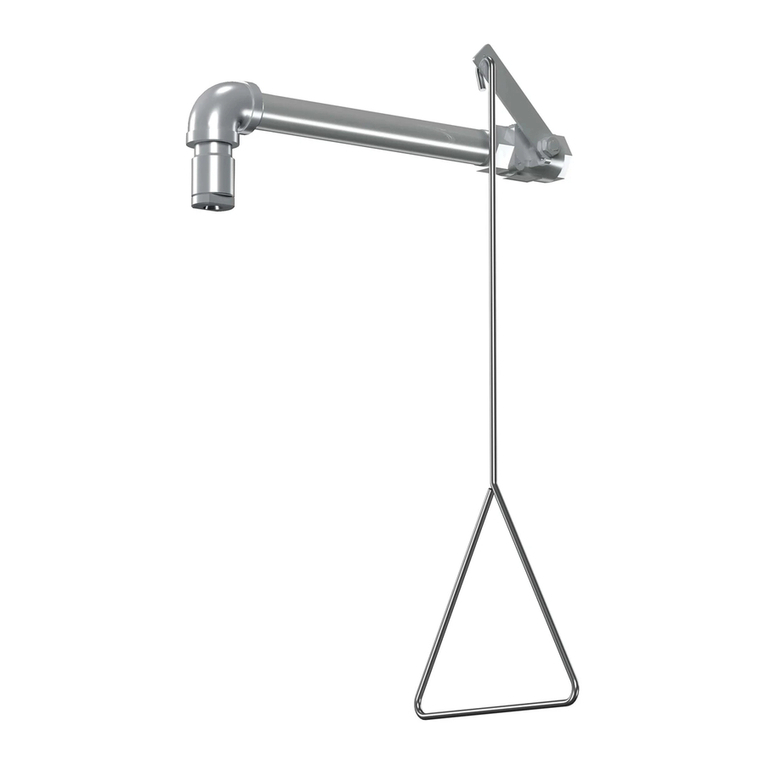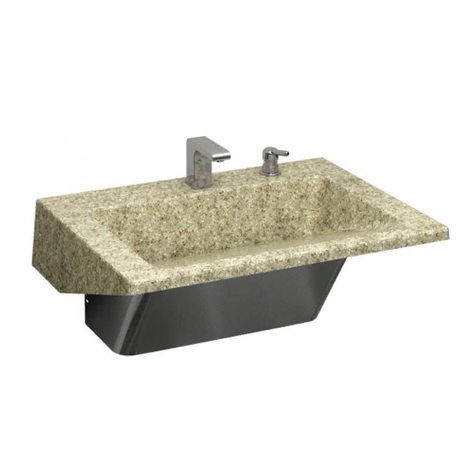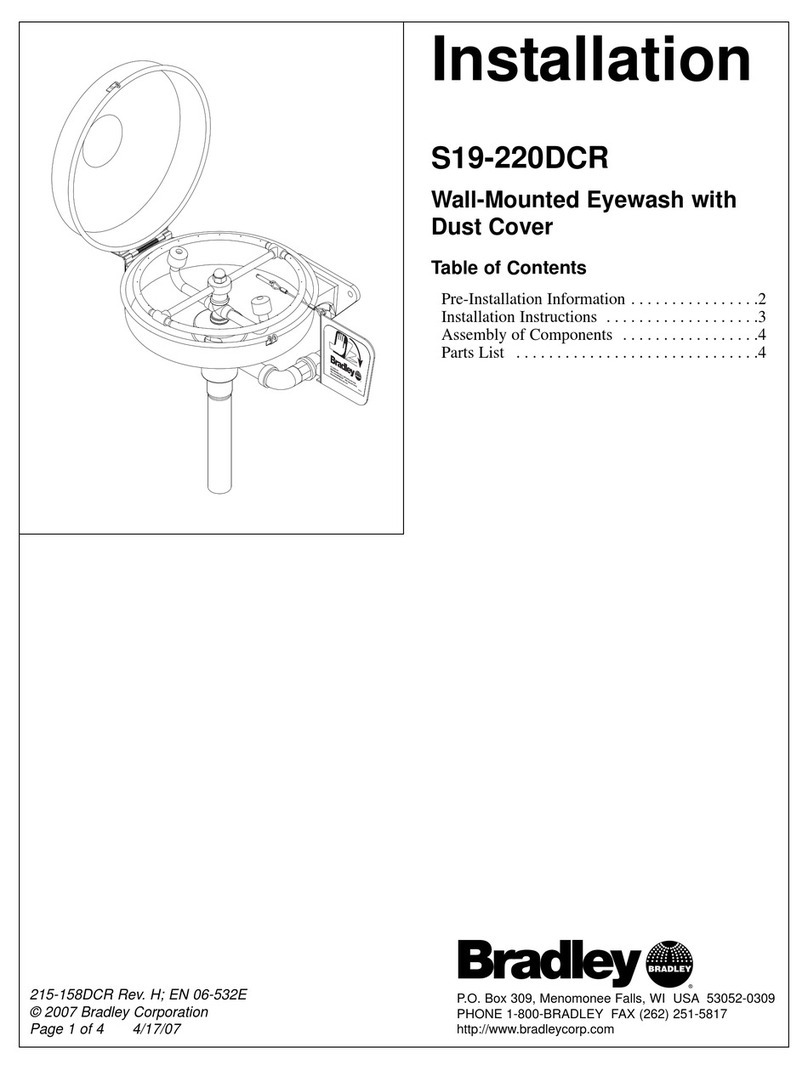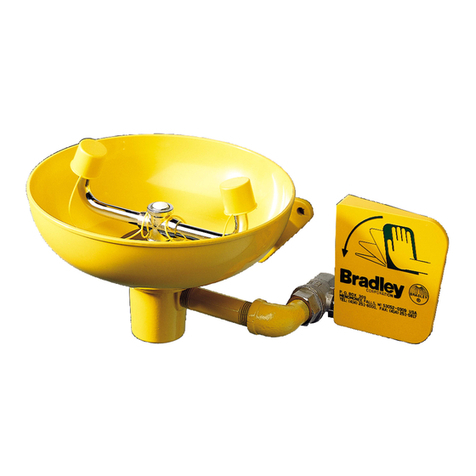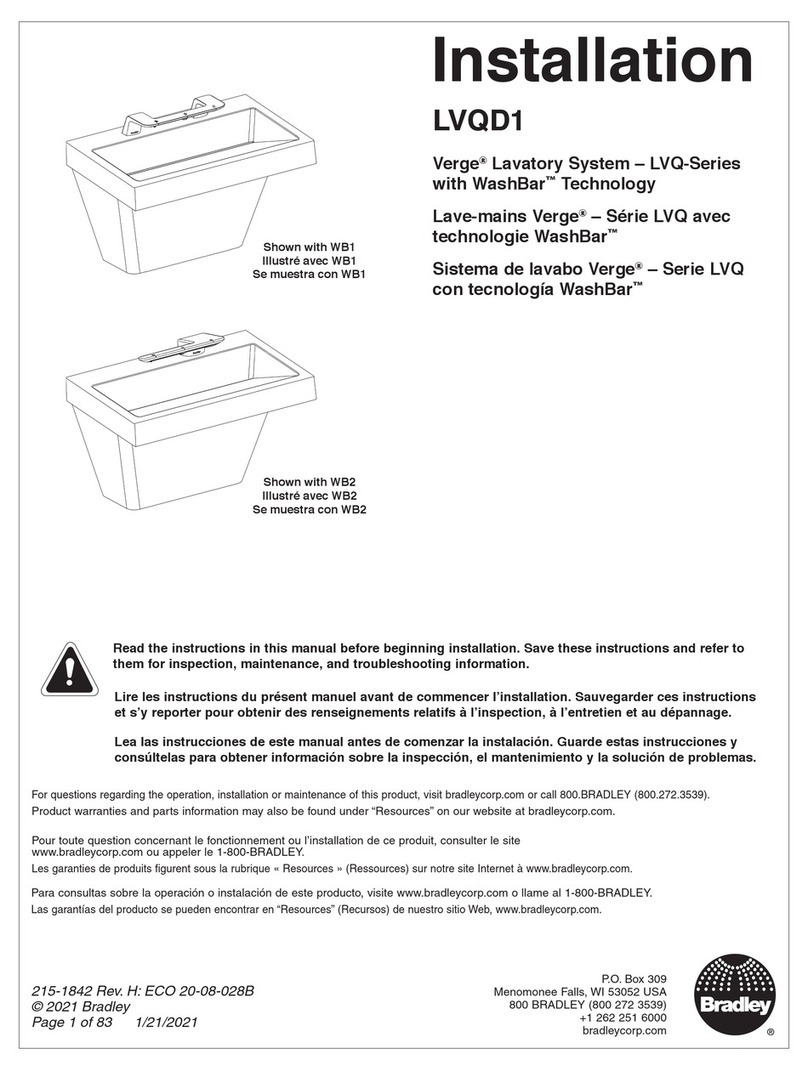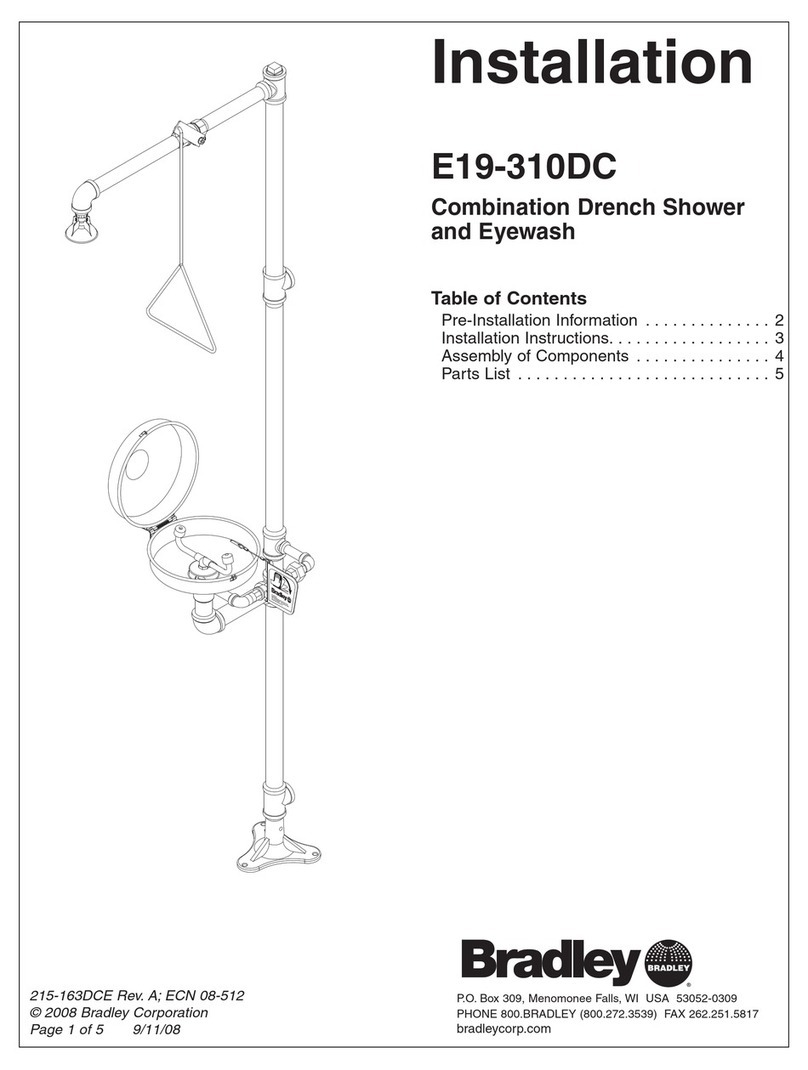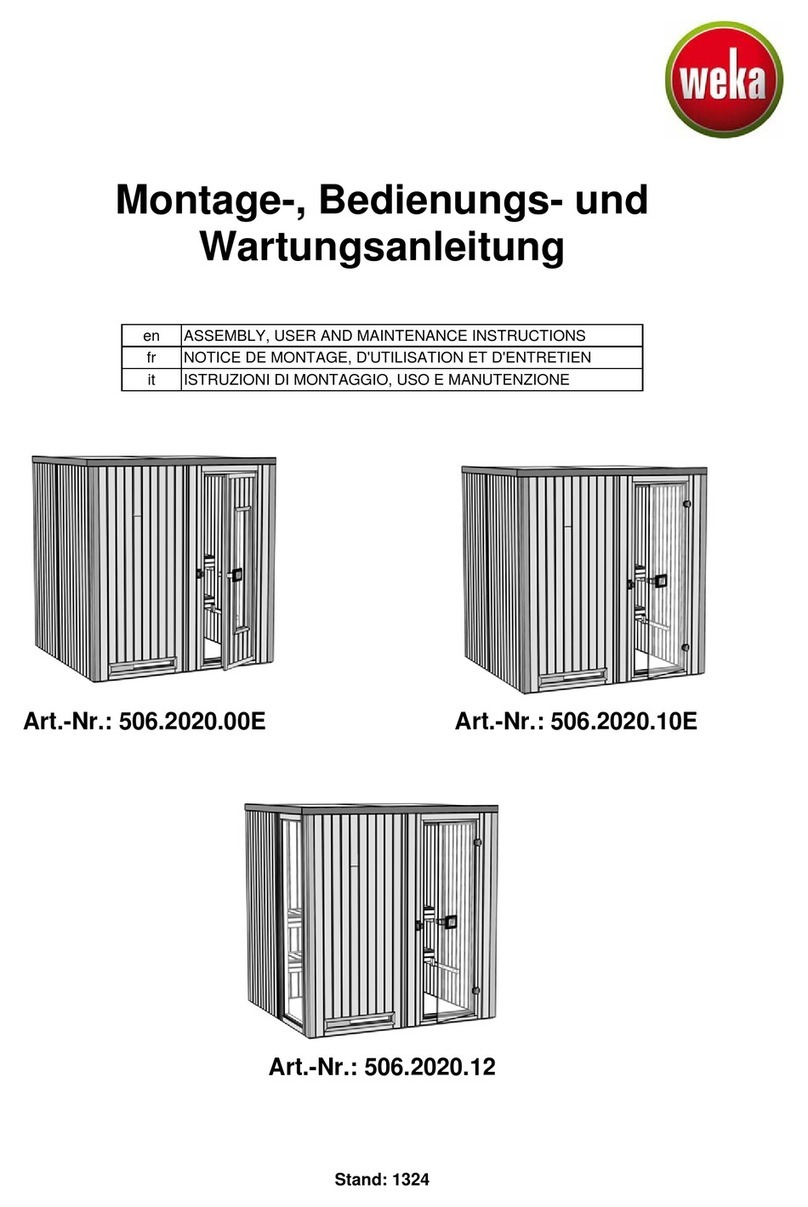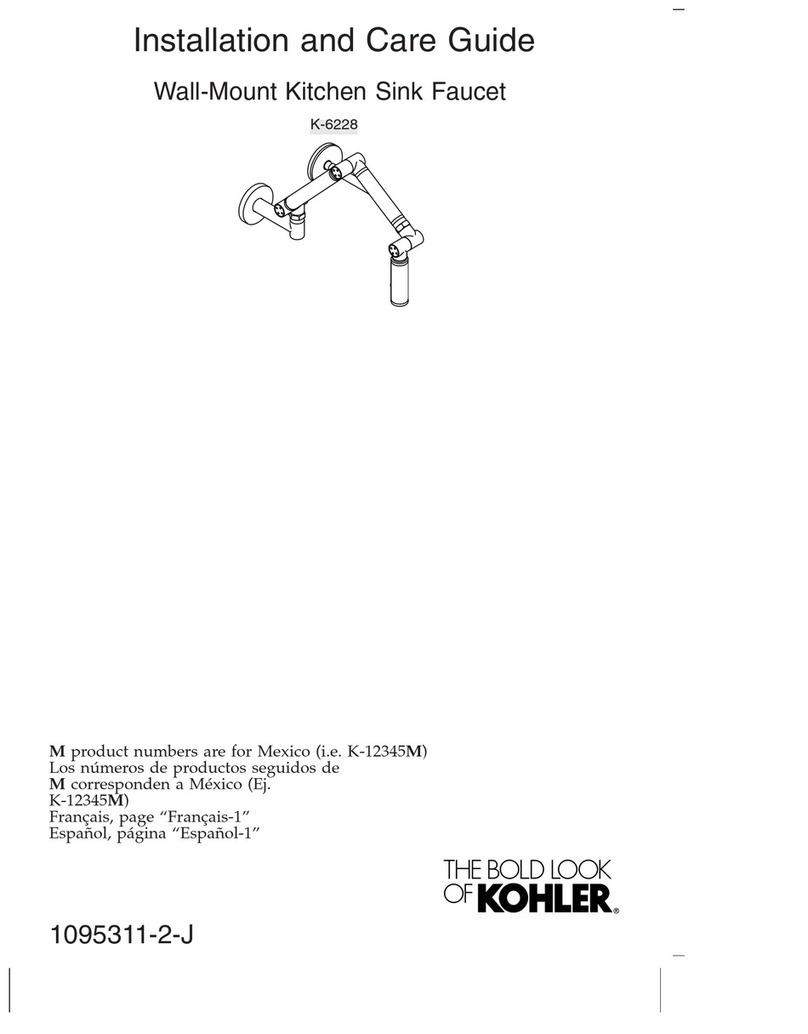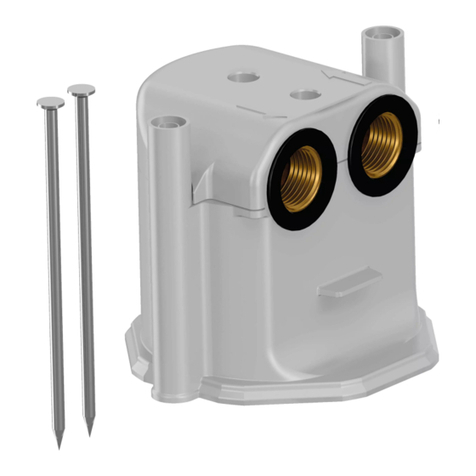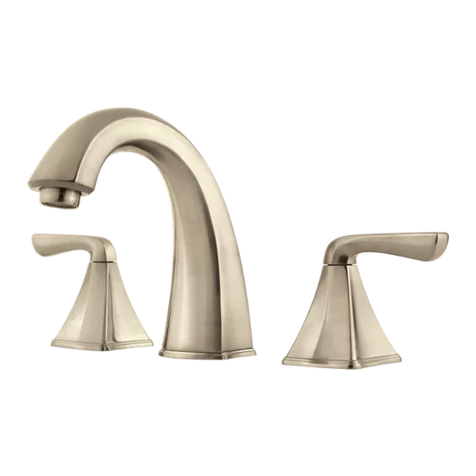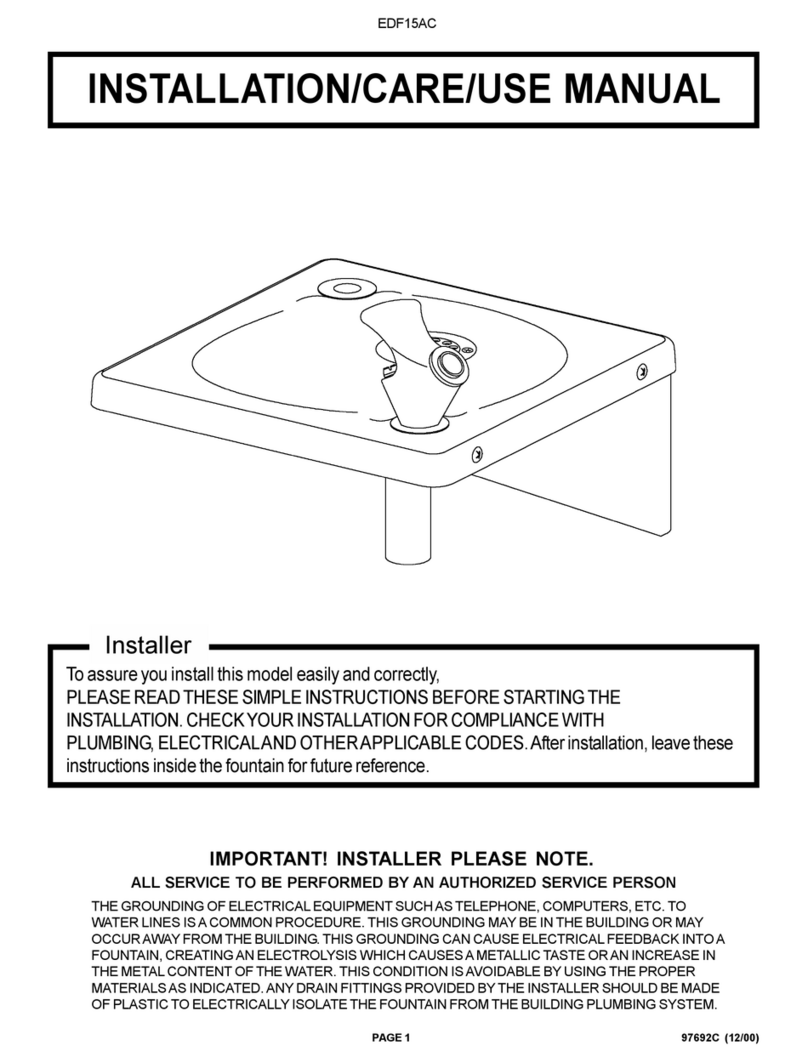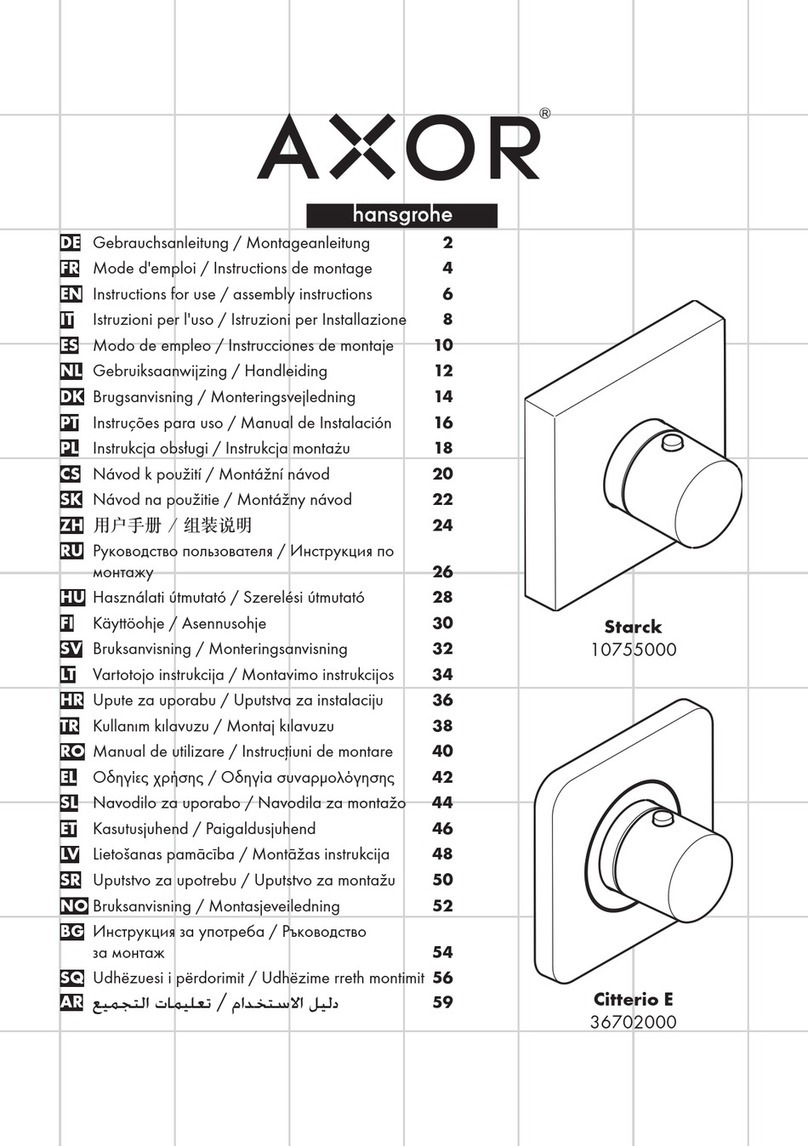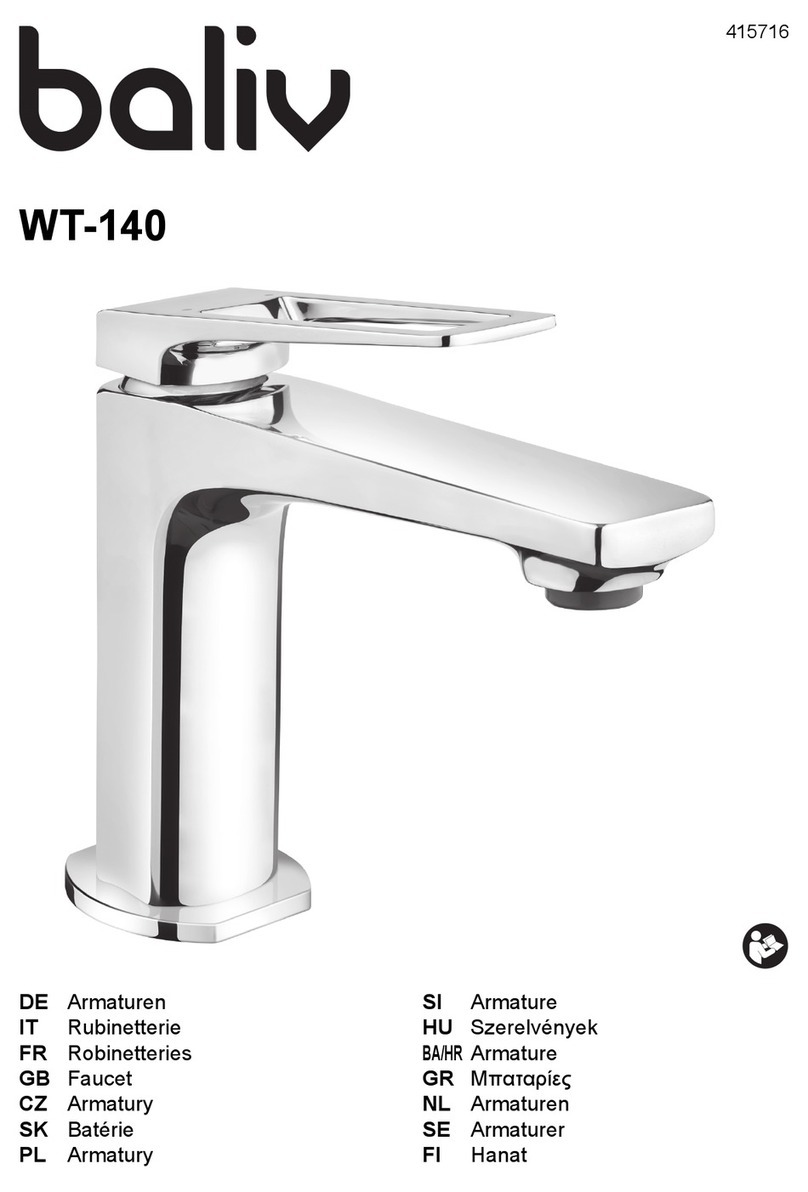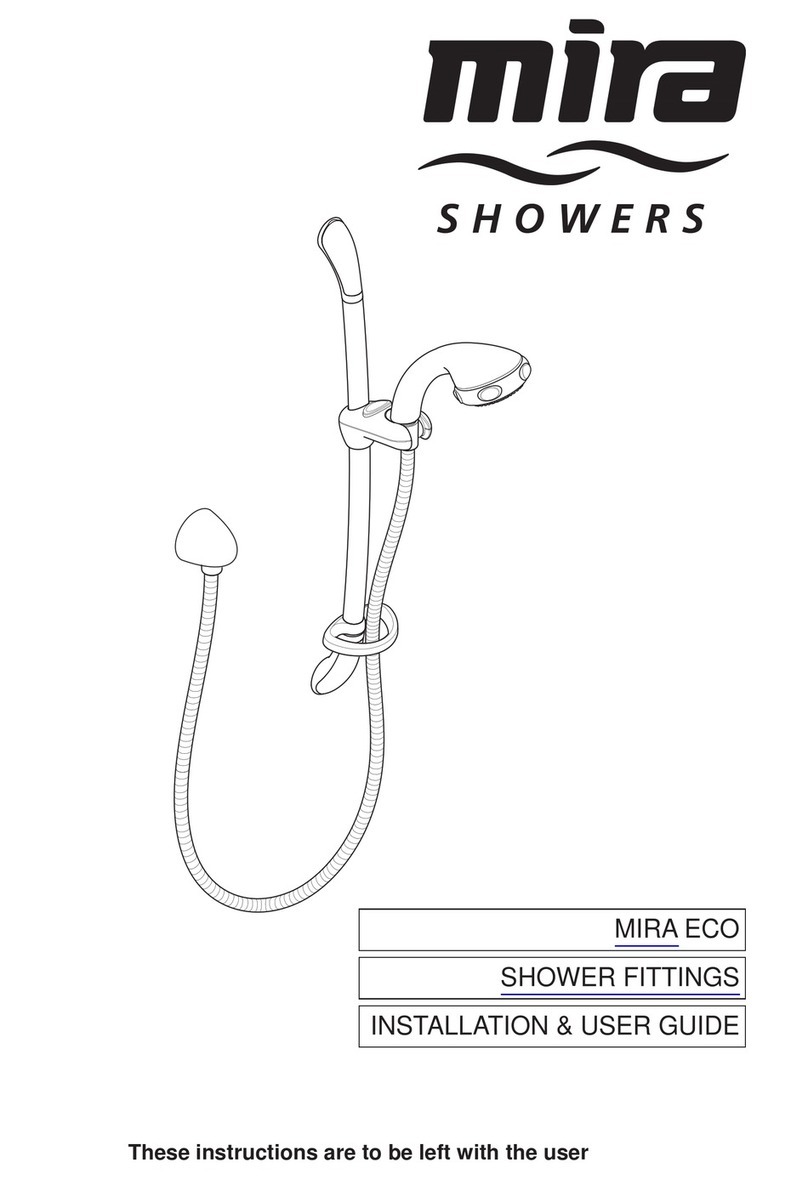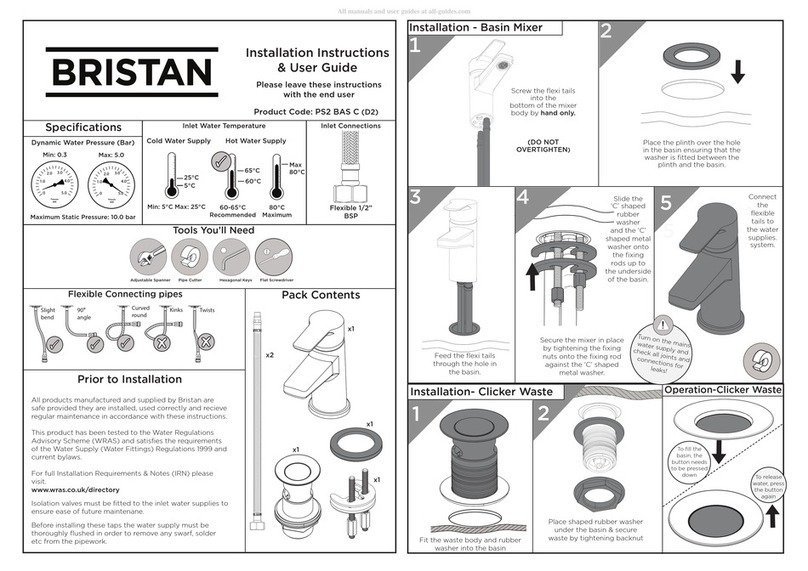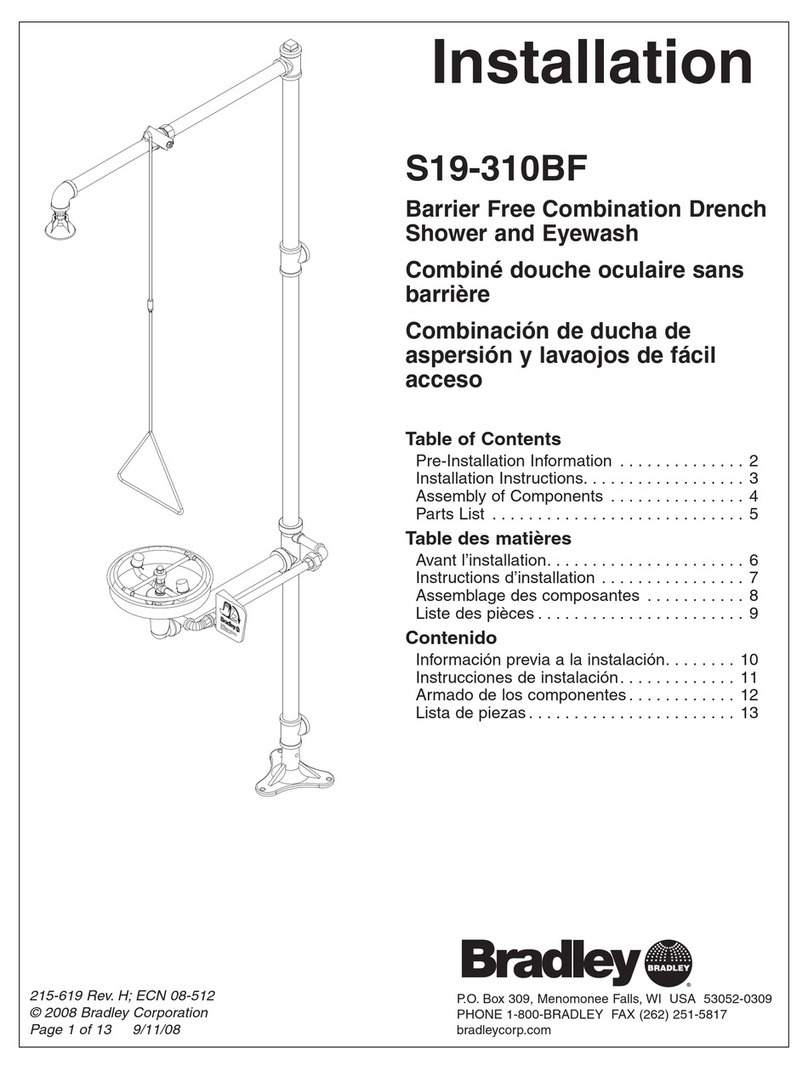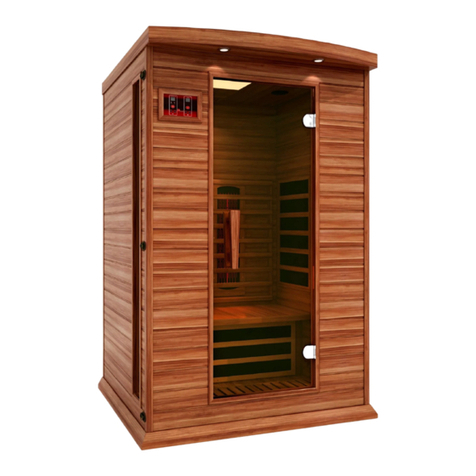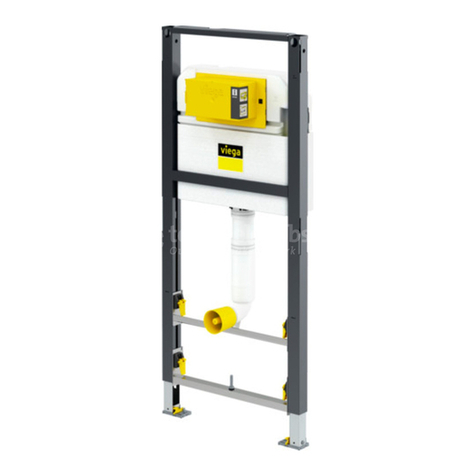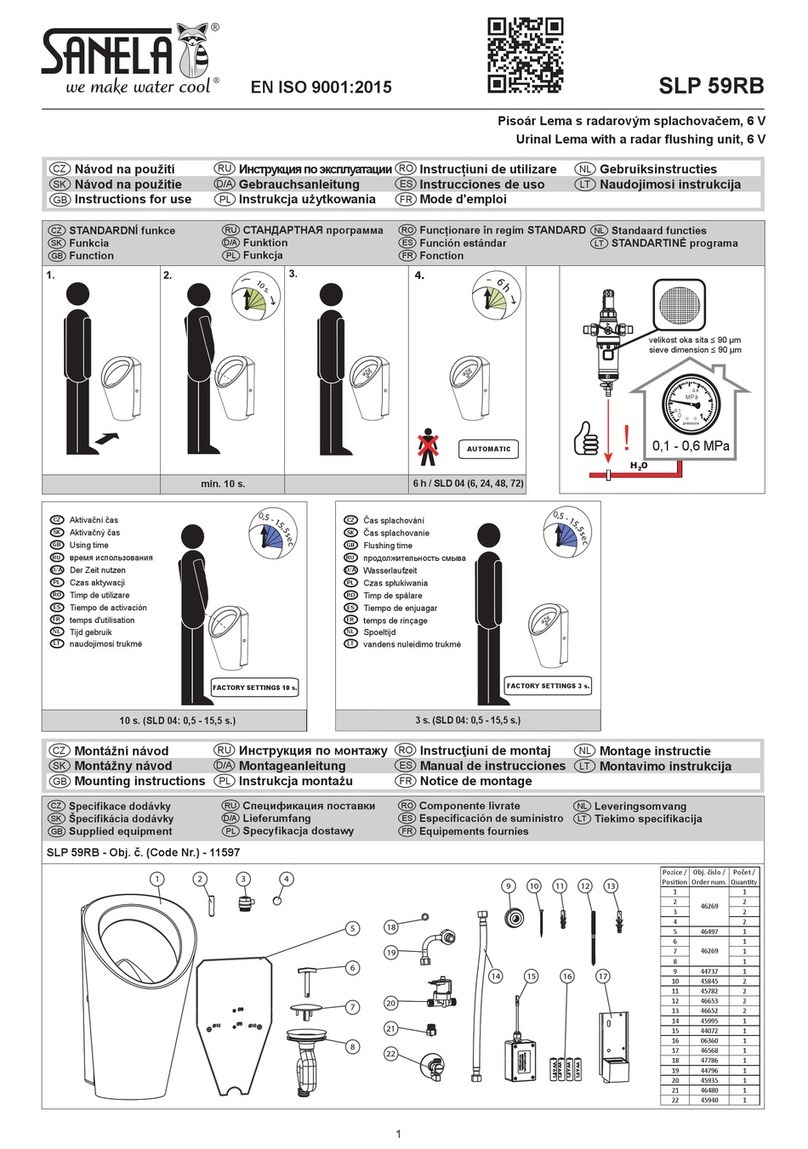
Express®Crescent®Lavatory System CRS-Series
Installation CRS-2/BIR3, CRS-3/BIR3
Bradley • 215-1328 Rev. Q: ECO 21-08-008 3/8/2021 9
Troubleshooting BIR3 Components
CAUTION: Turn off water supplies to unit before troubleshooting.
Problem: An individual operating station drips and fails to shut off.
Cause: There is debris trapped between the diaphragm and the valve seat.
Solution: Remove debris between diaphragm and the valve seat.
Disconnect the plug from the battery to the circuit board of the problem valve. Remove the three #8 Phillips-head
screws that hold the solenoid valve assembly together. Be careful not to lose the armature or spring (see Figure 9
on page 11). Remove the diaphragm. Remove any particles that are trapped between the diaphragm and the valve
seat. Rinse off the diaphragm and inspect for damage. Make sure the center orifice and both small side orifices are
open. Reassemble in reverse order, being careful not to overtighten the Phillips-head screws or you may crack the
plastic valve body. Tighten until the armature plate makes contact with the plastic body. Reconnect the battery plug
per Figure 6 on page 7. Turn on water supplies to the unit.
Problem: An individual operating station fails to turn on or off.
Cause: Excessive line pressure.
Solution: Install Pressure Reducing Valve.
Check the static line pressure. If the pressure exceeds 80 psi, install a pressure reducer valve at the street main.
Excessive line pressure (over 60 psi) will shorten the life of any valve.
Figure 8a
Figure 8b
Problem: An individual operating station fails to turn on or off.
Cause: A dead or faulty battery.
Solution: Test the station to determine cause and replace battery if
required.
Disconnect the plug from the battery to the circuit board of the problem valve.
Disconnect the plug from the battery to the circuit board of an adjacent valve.
Connect the battery plug from the adjacent working valve to the problem valve.
Wait for ten seconds. Activate the problem station’s sensor ten times. The station
should turn on. If the station turns on, and cycles normally, replace the battery.
Cause: Faulty sensor eyes.
Solution: Test station to determine cause; replace sensor eyes if
required.
Disconnect the sensor cable from the circuit board of the problem valve.
Disconnect the sensor cable from the circuit board of an adjacent working valve.
Connect the sensor cable from the adjacent working valve to the problem valve.
Activate the problem station’s sensor. The station should turn on. If the station
turns on and cycles normally, replace the sensor eyes (p/n 251-019A).
Cause: Faulty solenoid valve.
Solution: Test station to determine cause; replace solenoid valve if
required.
Remove the screw, circuit board and standoff from the problem valve. Remove
the battery holder. With a good working battery, briefly contact the solenoid valve
directly with the battery as shown in Figure 8a. The contact should cause the
valve to open. With the battery holder removed, briefly contact the solenoid valve
with the battery in the position shown in Figure 8b. This should cause the valve to
close. If the valve does not operate when directly contacted with a good battery,
and the solenoid valve has already been cleaned as outlined at the beginning of
this troubleshooting section, replace the solenoid valve.
If problems persist:
Pass your hand in front of the problem station, while at the same time looking to see if the indicator light on the
circuit board flashes (the indicator light is located near the hole in the circuit board where the standoff is mounted).
If it does not flash, and the battery and sensor eyes have already been tested as outlined above, the problem
may be with the circuit board. Make a note of the numbers printed on the circuit board, then contact your Bradley
representative for assistance.
